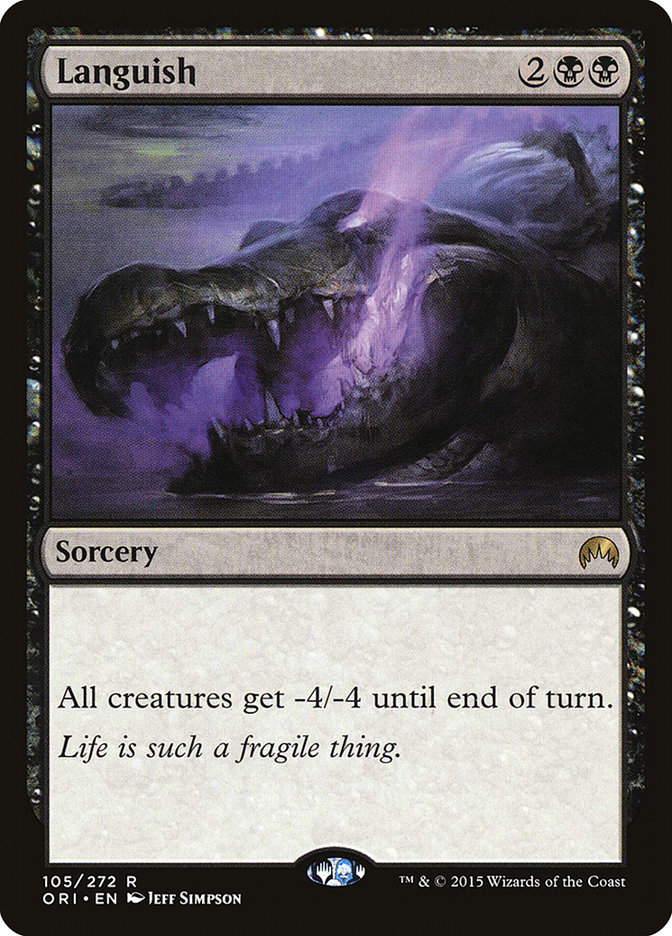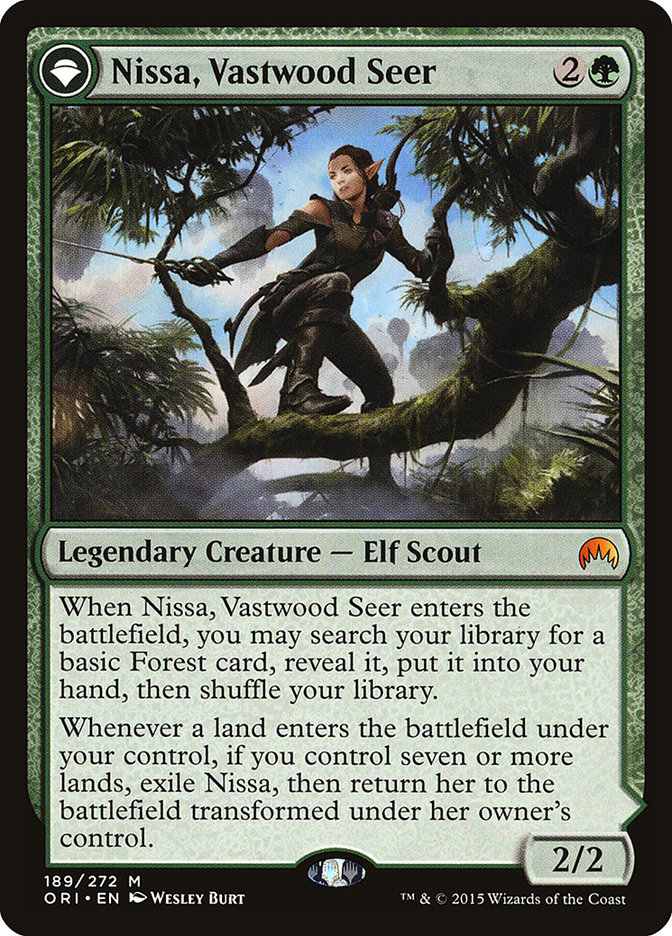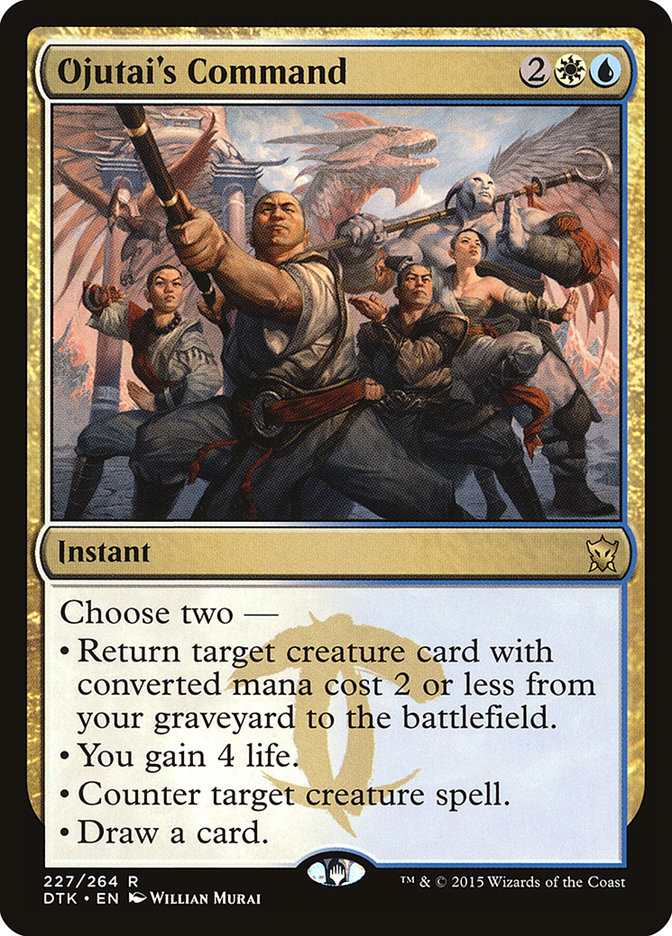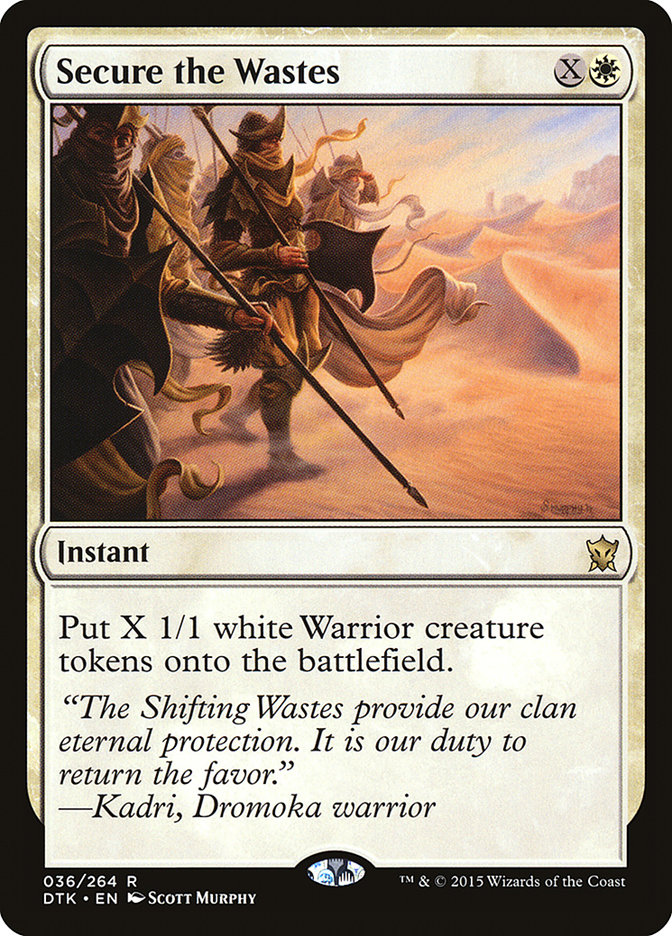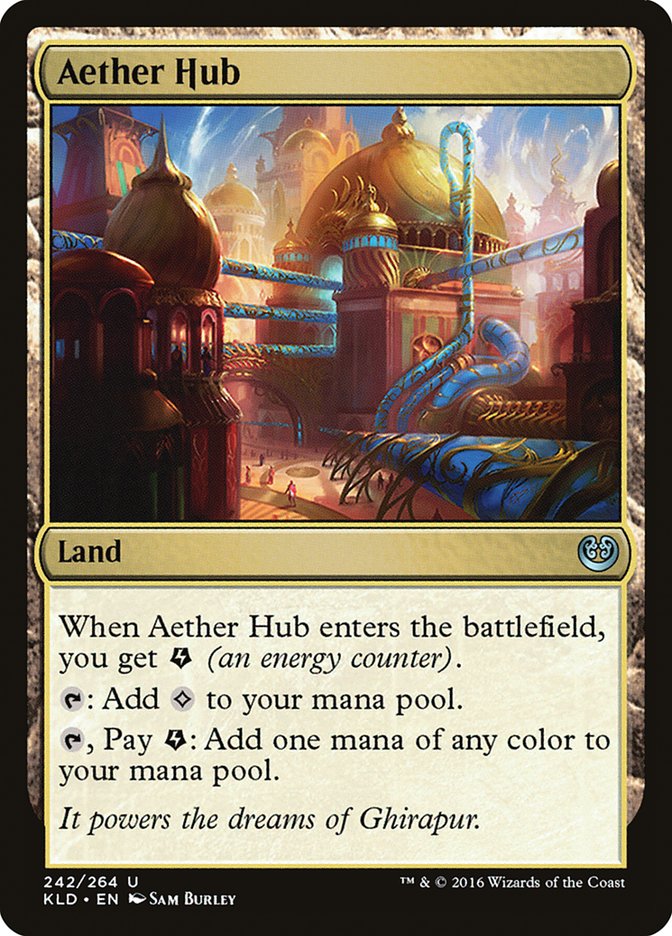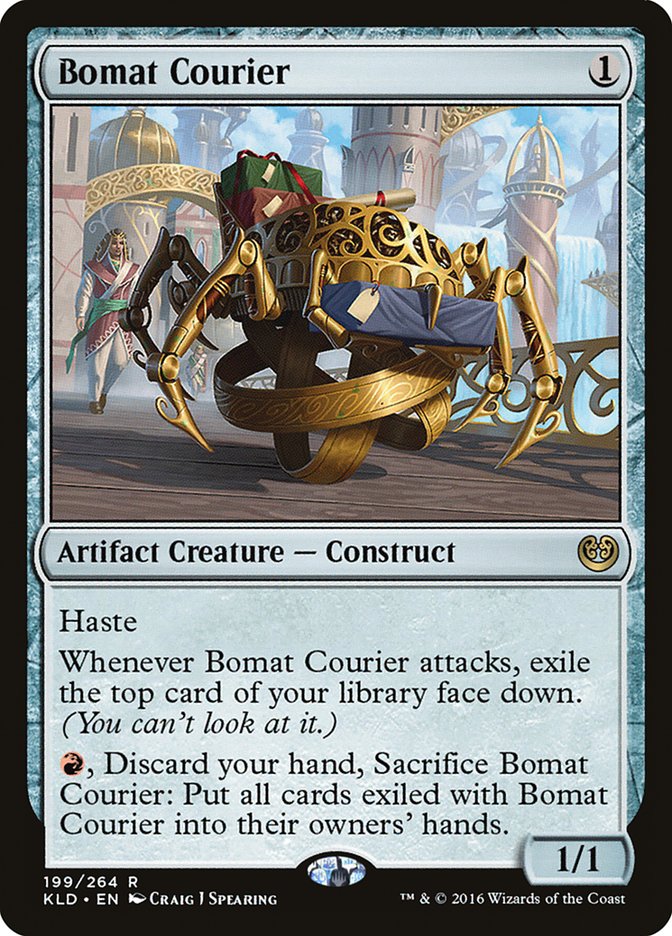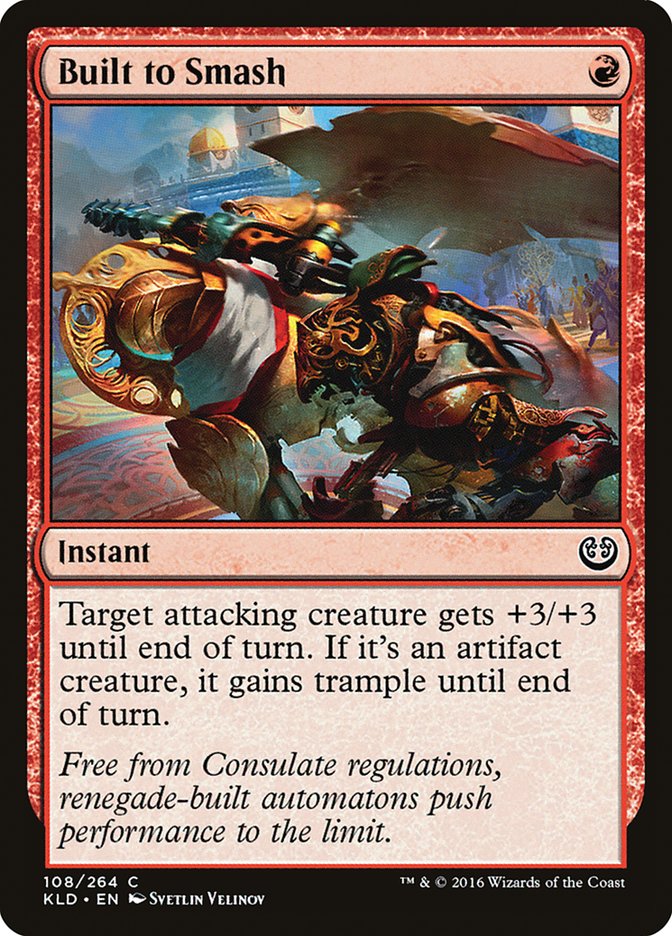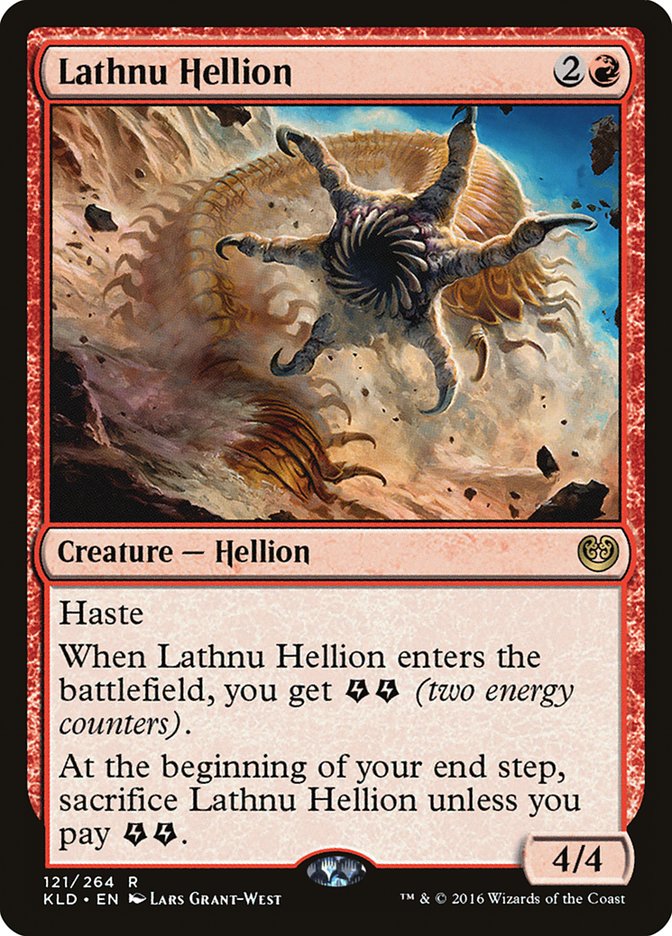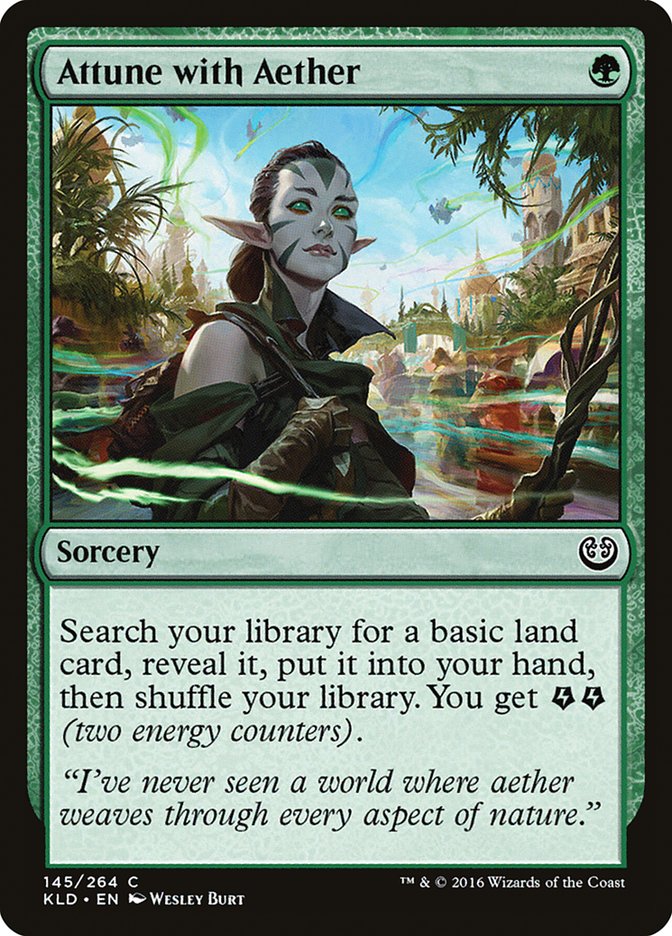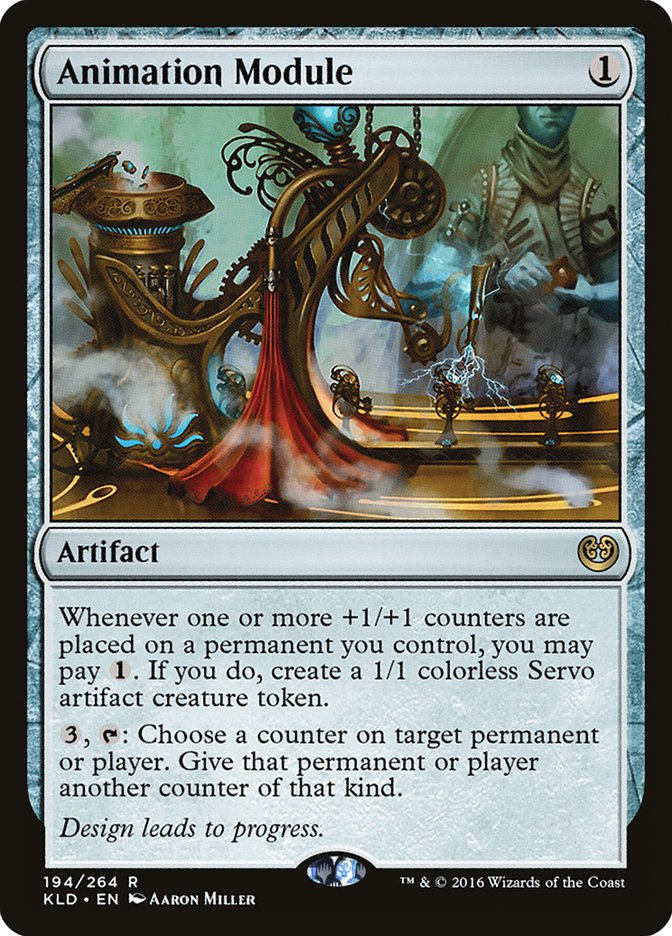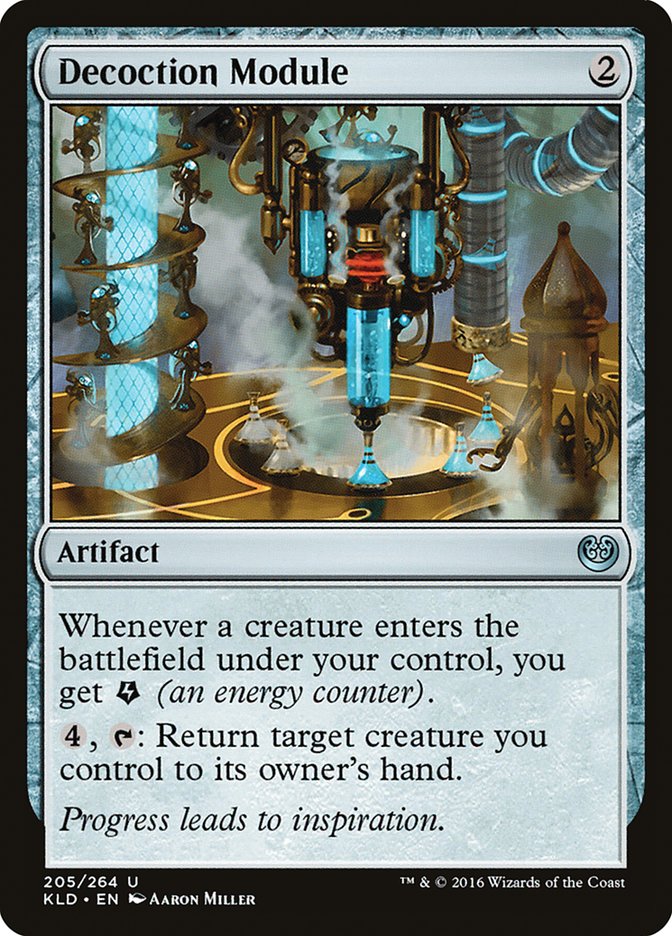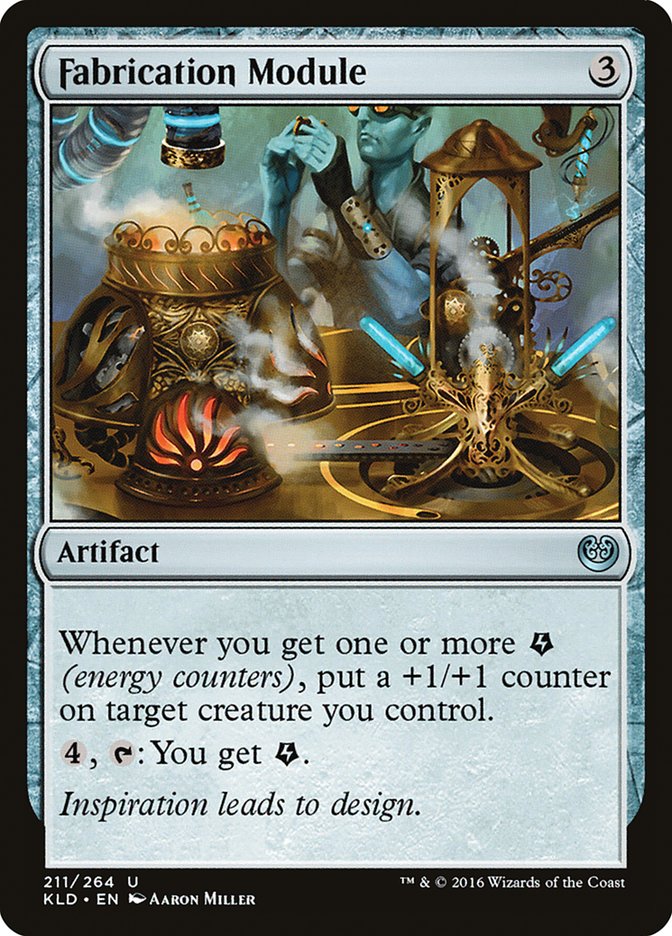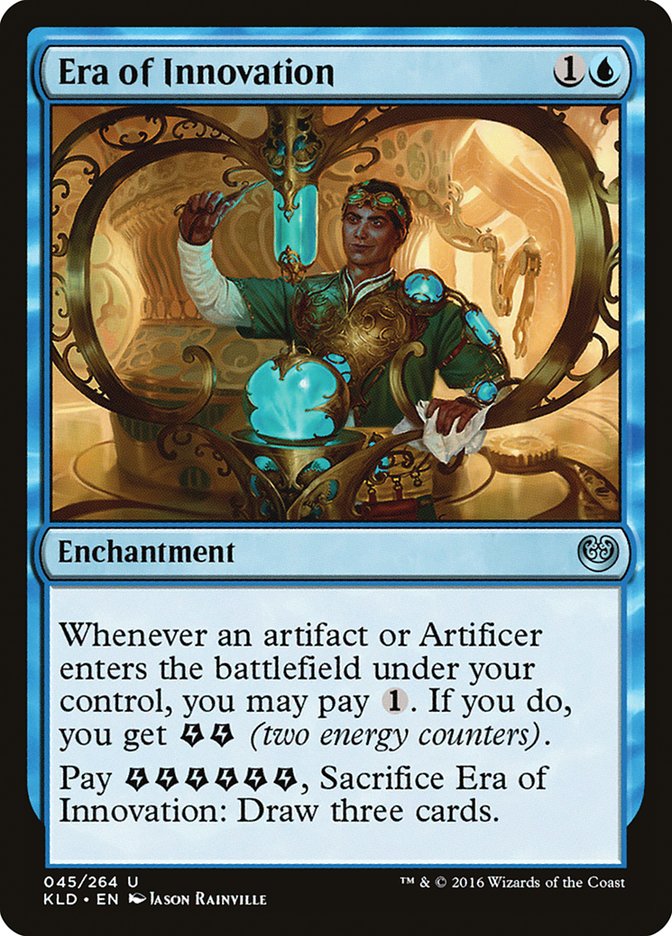There’s nothing I love more than building for Standard right after rotation, so I’m excited that rotations will happen twice as often these days. I wish we were losing Reflector Mage, as I think we’ve already had enough of that one, but I’m excited by how much this rotation will shake things up, and Kaladesh’s themes and mechanics look extremely well-pushed, to the point where it should have a major impact on Standard right out of the gate. As I begin turning my attention to testing Standard, the first things to look at are, “What are the known benchmarks that are preserved from the last Standard?” and “What new directions does Kaladesh allow us to explore?” It’s a lot easier to be thorough about the first one.
We can start by looking at Standard as it exists now. The top decks are:
Bant Company – Without Collected Company, there’s no obvious reason for a deck like this to exist.
Mono-White Humans – This loses Dragon Hunter; Kytheon, Hero of Akros; Anointer of Champions; and Knight of the White Orchid. White aggro gets a lot of new tools, but things change enough that it’s better to start from scratch when looking at white aggro than to try to update this shell. Thalia’s Lieutenant is going to be a lot worse than it was in a mono-white deck, if that exists, and, thanks to Aether Hub in addition to the enemy-land replacements for the Magic Origins painlands, playing two colors will be a lot easier.
Emerge – This shell loses Jace, Vyrn’s Prodigy and Gather the Pack. Those cards matter, but most of what this deck is doing is still around, and this should definitely be a part of an early gauntlet. However, Vehicles do a lot to punish reliance on Kozilek’s Return.
U/R Thermo-Alchemist – This deck loses some tools, but fundamentally can still exist. I’m skeptical of its positioning moving forward, as I think it’s a very metagame-based deck that doesn’t want to play against other aggressive creatures–basically, I think its strength was contextual, and I’m not optimistic about it, but it’s been successful and can likely be updated, so it’s good to keep in mind.
W/B Control – This deck loses Languish and Read the Bones. There are other sweepers, but those are at five mana in a world where Vehicles exist, so I’m not sure this shell has a clear purpose. There are a lot of good white and black cards, and a controlling W/B deck can certainly be built, but I don’t think imagining that you’re updating the old deck is the right way to think about it–Read the Bones and Languish were too much a defining part of that deck’s identity.
B/G/r Delirium – The biggest losses here are Nissa, Vastwood Seer and Languish, but I think this shell was much less reliant on Languish than W/B. This is definitely a strategy I’d want in my early gauntlet.
While they’re not currently seeing a lot play in Standard, as Standard seems to have narrowed as people have identified the best decks, there are a few other promising shells that have been played in Standard that likely have legs moving forward. The standouts to me are:
U/W Spirits – All the Spirits are still around. Collected Company is powerful enough that it just made sense for this deck to splash green and become a Collected Company deck, but the two-color deck only loses Ojutai’s Command and Clash of Wills. The creature base remains very strong.
G/W Tokens – Hangarback Walker, Secure the Wastes, Evolutionary Leap, Dromoka’s Command, and Tragic Arrogance all leave Standard, and for a deck that had already largely been pushed out by Emrakul, the Promised End and Spell Queller, that seems like a pretty big hit. However, there are still a lot of powerful green and white creatures around, and the combination of Nissa, Voice of Zendikar and Gideon, Ally of Zendikar is still very powerful, so I wouldn’t count this one out.
At first glance, Kaladesh seems to breathe new life into aggressive strategies with a variety of powerful one- and two-mana creatures, and the Vehicle mechanic is really designed for aggressive decks. However, aggressive decks tend to be more linear, and the linear decks jump out when I read through a new set. The most obvious draws to play a slower deck are the Gearhulk cycle, but there are also plenty of normal spells that can support more controlling strategies.
Let’s start with a quick look at some new decks:
Creatures (24)
- 4 Zulaport Cutthroat
- 4 Thraben Inspector
- 4 Scrapheap Scrounger
- 4 Toolcraft Exemplar
- 4 Weaponcraft Enthusiast
- 4 Syndicate Trafficker
Lands (22)
Spells (14)

Swarm Surge might be too cute, but it also might be outstanding. Many artifact creatures are colorless, of course, so it represents a lot of damage and makes blocking very difficult. While this deck only has eight artifacts, it has twenty cards that make artifacts (not counting Declaration in Stone), so it should be able to make good use of the cards that need artifacts.
While there’s no Madness to use with Smuggler’s Copter, Scrapheap Scrounger does an excellent madness impression, and this deck is very happy to discard extra lands since the curve is so low.
Aether Hub might seem out of place in a deck with no other Energy, but I think it might just be a good additional dual land in enemy-color decks (it’s much less good in allied-color decks, where it makes your other two-color lands enter the battlefield tapped more often), and it’s at its best when you have a lot of artifacts or few colored mana symbols, so that you can use it to cast the one card you draw early of the wrong color. I started with four, but I think it’s better to play fewer, especially with fewer lands, since you can’t possibly keep a hand where those are your only two lands, but you’d happily keep one Aether Hub and any other land unless it was something like a Plains and you held three black spells.
Zulaport Cutthroat took a big hit from Collected Company and Nantuko Husk leaving Standard, but I’m really excited about it in this deck, where Syndicate Trafficker offers a two-mana sacrifice outlet. While it can’t sacrifice all of your creatures, it’s a much better rate than we usually get sacrifice outlets at, and we have a lot of creatures this can eat.
If this deck played an additional madness outlet, like Heir of Falkenrath, Olivia’s Dragoons, or even Stern Constable, it could tilt its mana more toward black to support Voldaren Pariah, which is obviously great with tokens and Zulaport Cutthroat, especially with Weaponcraft Enthusiast. Another card to consider is Lupine Prototype, which is just a huge aggressive artifact creature that’s likely to be on pretty early in this deck, especially if you add another discard outlet.
Smuggler’s Copter and Scrapheap Scrounger are great together, but as I mentioned, it gets even better if you’re using madness more. White can’t help you with that, but B/R aggro also looks very promising:
Creatures (20)
Lands (22)
Spells (18)

Bomat Courier is an exciting card, and it clearly wants you to have cheap spells so that you can get to the point where you want to cash it in quickly. It wants you to be aggressive, because it helps you care about having a 1/1 with haste, and it wants you to have a lot of removal, so you can keep attacking with it.
On top of that, it loves Built to Smash, which accomplishes all of those things, while even letting you attack if your opponent has multiple small creatures.
This deck only has sixteen artifacts for Inventor’s Apprentice, but all of them cost one to two mana, so if you have one, your Apprentice will turn on right away. I’m a little worried about getting it into combat and getting my artifact killed, but you can usually see that coming, and I think the upside is high enough here. Collective Brutality is a great way to turn on Lupine Prototype and Fiery Temper, and this deck is really making the most of Unlicensed Disintegration.
I think a lot of players might consider playing a red deck without Chandra, Torch of Defiance a mistake, but I think there’s a lot of value to trying to go as quickly as possible with the first pass of aggressive decks to find a benchmark for what’s possible in the format. You can then consider slowing it down when you find out what’s beating it. Four is a ton of mana in a deck that’s looking to empty its hand for Lupine Prototype, especially since I’m hoping to discard every land beyond three a reasonable portion of the time. That said, I’m definitely excited about it as a sideboard card and would expect to bring it in for most matchups (as this is exactly the kind of card that’s better in sideboarded games).
R/G can be built around a similar shell, replacing Collective Brutality with Noose Constrictor as and additional Fiery Temper / Lupine Prototype enabler, but I think I’ve touched on this shell enough for now, so I want to look at R/G Energy instead:
Creatures (26)
- 3 Kessig Prowler
- 3 Verdurous Gearhulk
- 4 Longtusk Cub
- 4 Voltaic Brawler
- 4 Lathnu Hellion
- 4 Bristling Hydra
- 4 Servant of the Conduit
Planeswalkers (4)
Lands (21)
Spells (9)
Sideboard

This deck makes a lot of Energy, which means that whenever your opponent kills your creatures, you end up with Energy left over, which makes all of your other cards better when you cast them later. Harnessed Lightning will be amazing in this deck, but Longtusk Cub might actually be the card I’m most excited about. You don’t have to spend Energy on it to threaten its ability to grow, so if your opponent doesn’t block, you can just build up your stockpile, and then when they do, you can cash it in to make your Cub huge.
Lathnu Hellion is great here–if they kill it on the first attack, you’re up two Energy, and if they don’t, you got four damage and they still have to deal with it. Aether Hub and Attune with Aether mean that your first Energy plays are already extra-charged, and it just gets better from there.
If powerful creatures can’t get it done, this is an excellent planeswalker deck, as Chandra, Torch of Defiance and Nissa, Vital Force are extremely powerful cards, and Servant of the Conduit can get them down early.
The biggest problem with this deck is a shortage of good one-drops. Kessig Prowler doesn’t have any real synergy with anything else here; it’s just a way to get on the battlefield early, as the one-mana options just aren’t great here and I think Bomat Courier is a bad fit. This means the deck can fall behind on the battlefield against other creature decks, which is why I’ve filled the sideboard with good one-mana interactive plays to catch up or avoid falling behind in the first place.
I’m also curious about a more controlling use of Energy, like this potential U/R deck:
Creatures (12)
Lands (25)
Spells (23)

I may have gone a little off the deep end here. This wasn’t where I was planning to end up when I started making the list, but as I read each Module, I thought, “Yeah, this could do something reasonable on its own,” and then I decided to see what happens if I put them all together.
I have a high land count and a relatively low curve because the Modules mean I can always spend all my mana, so I don’t really want to miss land drops.
The Modules are really hard to parse individually or collectively, so let me talk through how each of them works in this deck.
Triggered ability: Whenever I attack with Thriving Grubs or Thriving Turtle, I can pay two Energy to put a counter on them. This allows me to pay a colorless mana to make a 1/1 creature. If I have Fabrication Module, I get a +1/+1 counter whenever I get an Energy, which means that whenever I get an Energy, I can pay a colorless for a 1/1 creature on top of that.
Activated ability: I can pay three mana to either put another counter on one of those creatures, which would allow me to pay another mana to make a 1/1, or I can give myself another Energy for three mana.
Triggered Ability: Whenever a creature enters the battlefield, I get an Energy. Obviously, this means the twelve creature spells in my deck each produce an extra Energy when they enter the battlefield. Also, whenever I activate Whirler Virtuoso, I get an Energy back. It won’t happen often, but if I have three Decoction Modules and Whirler Virtuoso, I can make an arbitrarily large number of Thopters. I also get an Energy each time I pay a mana to make a creature with Animation Module.
Activated Ability: This one’s pretty straightforward, and very expensive, but it lets me protect my creatures or reuse their Energy-creating triggers.
Triggered Ability: Since every creature in my deck makes Energy when it enters the battlefield, I also get to make a +1/+1 counter when one enters the battlefield. I also get to make +1/+1 counters when I cast most of my spells. If I have Decoction Module, I get to make an extra +1/+1 counter when I cast a creature, and if I have Aetherworks Marvel, I get to make a +1/+1 counter when any permanent, including Servos or Thopters, dies. I expect this to be a lot of +1/+1 counters.
Activated Ability: This one’s pretty straightforward, and the rate is just worse than the rate on Animation Module.
Era of Innovation felt like too much of this kind of thing to include in the maindeck in case my opponents wanted to attack me, but it also kind of goes off with the Modules in various ways, and this deck can sometimes generate tons of Energy, which I might want to cash in for three cards.
Aetherworks Marvel is likely to also do great things in this deck, even if it’s not casting especially expensive spells for free, but it similarly felt like too much mana upfront for a payoff that was too slow on top of the general slowness of the Modules.
I genuinely have no idea how this deck will play out–it’s doing a lot of exciting things eventually if the right pieces come together, but really, most of its things pair with most of its other things to accomplish something or other. At the very least, it looks really fun.





